|
My mom let me take a day off school at the end of March so I could go to Cambodia and see elephants. Thanks mom! We went for three days so we could pay a visit to the Mondulkiri forest and see the two retired elephants they have at a brand-new sanctuary there. I learned a lot about these two elephants and Khmer beliefs about these creatures. But I did not just learn about elephants. I learned about the wonderful job the group LEAF is doing to protect all of the animals who live in the rainforest. LEAF (Local Environmental Awareness Foundation) (http://www.mondulkirisanctuary.org) is focused on educating Cambodian people and foreign visitors about animal welfare and conservation. Logging is also an important issue to LEAF. LEAF is a very newly formed organization. It is quite surprising to see how much a tiny organization can do. They are a non-governmental organization, so all of their money comes from donations and ecotourism. They are using the money they earn to create a sanctuary and eventually a wildlife rescue and rehabilitation center and to build houses for the people who volunteer to help. Our guide, Ratana, and a volunteer named Jane took my mom, my aunty and me to the forest to hike. It was pretty hot that day, and I regretted bringing a giant backpack. Ratana was very knowledgeable because he had been very interested in nature since he was a child and he grew up in this area. He told us as we were walking through the forest that the Bunong people, a small minority tribe from this forest, owned this land and that LEAF was leasing it from them. LEAF is trying to lease some of the neighboring deforested farmlands as well. Some of the land nearby is owned by the government, and a lot of it was being illegally logged too. A bit later we crossed over a stream, and on the other side Ratana recognized the tracks of a giant Sambar deer, which is one of the oldest varieties of deer on the planet. Probably the most interesting thing we saw on that walk was a very rare species of bug. On the side of a small tree, my mom noticed lots of fluffy white things which looked like flowers. She asked Ratana what it was, and he said it was a small bug. My mom asked what type, but Ratana said it was so rare that the Khmer (the main group in Cambodia) people don’t even have a name for it. The little bugs started jumping around, and my mom and I stared at this amazing and beautiful bug. The bugs were very interesting. When they jumped, they recoiled and then shot out, like a rubber band. Ratana did not seem that interested in the bugs, he just kept on walking. My mom did some research later and it turns out that the bugs are flatid planthopper nymphs, which are super rare for this forest and hardly ever seen by human eyes. LEAF is doing a great job for such a new organization, and the thing it is focusing on is rehabilitating the ecosystem for the animals that live in the area. Most of the animals who live in Mondulkiri are migratory, which means they move around to get food and water. And because a lot of the forest that the animals use to migrate has been destroyed by loggers, the animals are having a hard time getting around. But LEAF is trying to stop that. They are rebuilding the main migration corridor in the forest. They are first planting fruit trees, because they grow very quickly. The trees will provide more food for the animals, thus raising the population. And when the forest is healthy enough, LEAF is going to replant the native trees.  The reason most of the forest here is being destroyed is illegal logging, mostly by foreign companies. A worker at LEAF named Scott told us a lot about the logging situation. It is illegal to cut down trees in the forest, but as we were walking we passed by lots of stumps. Cambodia is extremely poor, and for a lot of people in this area, logging is a way to earn money. Scott also told us most of the wood cut down is smuggled into Vietnam, and then goes to China. Illegal loggers sometimes work with people in the government, which is why it is so hard to stop them. A logging company had built the road that we came on to Mondulkiri, but we didn’t even know that. The loggers get away with taking the logs in their trucks, because they “own” the road and so the police don’t stop them. We finally arrived at the clearing where the elephants were hanging out with their mahouts. The elephants are named Cherpil and Chelot. Chelot is 67, and Cherpil is 70. These two old ladies are great friends and they did everything together. If one got alarmed, the other one would follow behind. They both like the same plants, and where one went, the other followed. We just enjoyed watching the elephants doing what they like to do. Both elephants did not have the best looking backs, though. They we curved upward in an odd position. We asked Ratana why, and he said it was because before LEAF rescued them, they worked as riding elephants for tourists. Everyday they had to walk two hours to the tourist camp with big heavy elephant saddles on their backs. If they stopped on the way to eat, which elephants like to do, they were beaten. They gave rides to tourists all day, and only got two hours’ break to eat, not nearly enough time, as wild elephants eat almost every waking hour. They also sometimes worked for illegal loggers. These two elephants (above R) are owned by many different families, so they were worked a lot to do many different things. That’s where LEAF stepped in. LEAF pays the families to not work their elephants at all, so the elephants could retire. LEAF pays villagers to not do things like this. They provide food and power to some villagers, asking them only not to hunt or illegally log. 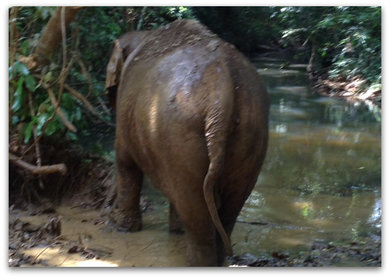 Chelot’s mud bath. You can see her hairless tail. Chelot’s mud bath. You can see her hairless tail. I noticed that Chelot was missing the hairs on her tail. I asked Ratana why, and he said because the Khmer people believe if you make a bracelet or ring out of elephant hair, it’s supposed to be good for you and bring good luck. He said after the hairs were pulled out by the roots, it was bleeding a lot. Chelot was not as unlucky as some elephants, who have their entire tail cut off, and are sometimes even killed. My aunt now knows never to buy elephant hair rings and bracelets. When she was young and lived in India, she sometimes bought jewelry made with elephant hair, not knowing the truth behind it. My mom asked why the elephants did not have any children, because in the wild elephants of their age would have had about three calves. Ratana said that the Khmer people believe that if an elephant has a baby, one of the human babies in the village will die. So working elephants are restricted from breeding. After our conversation with Ratana, we walked down to the river to bathe the elephants. The elephants didn’t want to get into the water but just splashed in the mud a lot. I was eating my lunch while the elephants were in the mud, which is a very bad idea. My fried rice ended up with mud in it. The mahouts kept trying to get the elephants into the water, I think because they did not want to ride the elephants’ muddy backs. After a while, the elephants walked out of the mud and into the jungle, with their mahouts following them.  Zero carbon footprint power generator Zero carbon footprint power generator We walked over to a small waterfall without the elephants, and Scott showed us the hydroelectric generator built by a local man that has a zero carbon footprint. LEAF has created lots of eco-friendly energy generators, which they use to power villages and houses for the volunteers to stay in. I found that very interesting. It was time to leave, so we headed back to the clearing, and Chelot and Cherpil were there, grazing. I did some sketches of the two of them while we were enjoying the fresh air and breeze of the jungle. We said our goodbyes to them, and started our hike back. I think LEAF is doing an absolutely amazing job protecting the wildlife of the Mondulkiri forest. If you ever visit Cambodia, I highly recommend coming here and enjoy seeing the forest and the animals. I would like to thank my mom for taking me to such a fun and interesting place, and I’d like to thank LEAF, for doing such a great job protecting the forest. I will come back next year when I am being homeschooled, and I will volunteer at LEAF. LEAF Website: http://www.mondulkirisanctuary.org/ “Unless someone like you cares a whole awful lot, 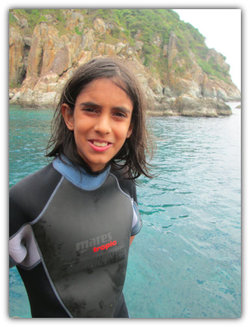 Kabir Kabir Over the Tet (Vietnamese New Year) holiday, my family and I took a trip to Nha Trang, Vietnam. While we were there we went snorkeling, which was so fun. But this article isn’t just about me going on vacation for you to read about. This article, and the marine preserve we went to, shows that even though Vietnam doesn’t have the best record when it comes to taking care of its wildlife, it is doing some things to protect its creatures. If it’s possible for Vietnam to help this marine preserve, then maybe they can do the same for all their other ecological problems. The island we swam around is called Hon Mun. Hon Mun is also the name of the protected reef. Hon Mun Marine Preserve was the first marine conservation project in Vietnam, which started in 2001. It was designated to be a reserve in 1993, and their mission is to conserve coral reef biodiversity, encourage tourism that doesn’t damage the ecosystem, and promote sustainable fishing. We were swimming on a corner of the island called Mushroom Bay. The reason it’s called that is because the coral looks very much like mushrooms. We went by boat to the island. Our guide told us not to touch any of the fish, because they might bite. He also told us to not take the coral, for it is a huge problem and is endangering the reef. Hon Mun has over 350 species of coral, out of the 800 that exist on earth. They have 230 species of fish, 122 species of mollusks, and 112 twelve species of crustaceans. We arrived on the bay, and it was not yet very sunny. I put my wetsuit on, and jumped in. The water was very pleasant, but it took some getting used to. After I got used to it though, I went on my belly and started to snorkel, and the life I saw down there was beautiful. It was blue, and about 5 meters down were all the fish of many different kinds. I saw striped fish, spotted fish, clown fish, parrotfish (which have beaks like parrots), and so many other things. Sea stars, urchins, and sea shells. And swimming through the water was like flying. The coral on the bottom was very big, and there were so many different kinds. Some of them looked like mushrooms, and one big one looked like a volcano with tons of wrinkles. I saw some brain coral, which looked very creepy. Did you know that coral is an animal? A lot of people think coral are just underwater plants, like seaweed. But that's not true. Coral is made up thousands of tiny creatures called polyps. They work together and form a super hard exoskeleton of limestone. Then they look as if they are a plant, because after forming an exoskeleton they are sessile, which means they are immobile and attach to the dead coral or rocks on the ocean floor. The polyps use tiny tentacles to get food from the water, and throw into their mouths. The polyps grow, then die, and this happens over and over again, producing more limestone, creating giant reefs. Coral can even make the largest natural structures in the world. But coral has a lot of threats. About ¼ of all of the world’s coral reefs are completely destroyed, and about ⅔ are in severe danger. Dynamite fishing (using dynamite to kill the fish for easy pickup) and cyanide fishing (spraying chemicals in the water to stun the fish for collection) are a huge threat to not only fish, but coral too. Too much fishing leads to an unbalanced food chain, and there are no fish to clean the coral. Non-ecologically friendly tourism is a big problem. Tourists who dive or snorkel and take things from the reef affect the ecosystem, and anchors are often dropped right on the reefs. Pollution is another HUGE problem. A lot of the chemicals that people dump in the water poison the reefs. Some pollutants are filled with nitrogen, which can cause algae to grow at an alarming rate, stopping sunlight from reaching the coral. Erosion from construction can also surround the coral, blocking the sunlight. Taking live coral from the reefs is extremely harmful. They are made into bricks and concrete, and are sold to tourists who are unaware of how this trade hurts the marine life. And global warming affects the coral reefs, because coral cannot live in water that is too high in temperature. Hon Mun Marine Preserve has a done a lot of things to preserve and protect the coral and to educate people about it. They have conducted surveys about the health of the marine life, they have identified and recorded new species of fish and coral, they have trained local villagers to keep track of the coral’s health. They are monitoring the reef habitat. They have identified the problems that Hon Mun has and is trying to fix them. We came back on the the boat, and we headed off to another place to snorkel. I preferred this place to the other, and we stayed there longer. The sun came out, and the water was even more clear and blue, I could see the reef bottom from the boat. When I jumped in, I saw all the beautiful table coral, which is absolutely enormous. The reason it’s called table coral is because, well, it looks like a big flat table. The most interesting fish I saw here was the butterfly fish. The other bay had some, but here there were hundreds swimming in pairs.They are flat, very small, and have stripes running down their sides. They are very interesting fish though, because they always stay in a pair of two, a male and a female. If anything should happen to the female though, the male actually turns into a female! It’s amazing. She will then go off and find a male to hang out with. After a bit more snorkeling, we got back on the boat and headed back to shore. I had a lot to think about. This marine preserve may it be a bit polluted (we saw some plastic bags and cans floating in the water), but it shows that in Vietnam, even though a lot of the wildlife is not doing great, it can get better. Mon Hun used to have horrible problems, like extensive fishing, huge tourist attractions, and even dynamite fishing. But Hon Mun is now one of the most beautiful spots in Vietnam, and one of the most beautiful places I have ever seen. If Vietnam can do the same thing for many more of their environmental problems as they have done for Hon Mun, the wildlife of Vietnam could have a brighter future. Sources:
http://www.nhatrangbaympa.vnn.vn/index_en.htm http://oceanservice.noaa.gov/facts/coral.html http://www.alotrip.com/guide-vietnam-attractions/hon-mun-marine-park http://wwf.panda.org/about_our_earth/blue_planet/coasts/coral_reefs/coral_threats/ http://www.climate.vn/wildlife-in-vietnam-is-endangered-despite-biodiversity.html A few days after visiting the wonderful Patara Elephant Farm, we visited the Elephant Nature Park (ENP). A van picked us up and took us from our hotel in Chiang Mai and we drove for about an hour. ENP is in a beautiful natural valley, bordered by a river, and surrounded by forested mountains. This park is different from the other two elephant sanctuaries I went to in Thailand. This park is meant to take care of rescued, injured, and sick elephants. Instead of really getting to know or play with the elephants, we came here to just observe and learn about them. The elephants here are less comfortable around humans, so they are just there to rest. On the drive to the ENP, our guide, Em, told us a bit about the park and she showed us a video. She said the elephants here are uncomfortable around humans because they were abused by them in the past. The video was about the history of elephants in Thailand and why the park was set up. It also gave us some rules about interacting with the elephants. In 1989 Thailand made logging illegal. This was good for the wild elephants, but very bad for the captive ones because their owners went out of business, and it is very hard to take care of an elephant with no money. Many elephants ended up begging for food in the concrete jungle. The only way some owners could afford the elephants was to use them as tourist attractions. With little food, dirty water, and no elephant friends, this is a very depressing life for elephants. At the ENP, they try to rescue these elephants by buying them from their owners, so they can have a better life there. The ENP is concerned with conservation of wild elephants and the treatment of the captive ones. The video also told us we were not supposed to stand behind the elephants, or touch the elephants, because they might get upset.  As we entered the park, we saw lots of dogs. This park also rescues dogs and cats from the streets of Chiang Mai, to live among the people and elephants. I saw lots of dogs walking right next to the huge elephants. The dogs and the elephants did not seem to mind at all! Elephants are very friendly creatures, they will be your friend, and be so gentle, despite their massive size. The place where we observed the elephants was a huge platform made of of wood covered with a roof and supported by huge pillars. It was high enough so that the elephants could walk under the platform, right under your feet. I thought that was very cool. Em told our group to sit down at a picnic table, and she once again went over all the rules about the elephants. She then told us a very important one, do not step over the yellow line on the edge of the platform. There were fences to stop us from falling, but the elephants don't want to be to close with us. She then told us we were going to feed the elephants, although these elephants ate differently than the elephants of the previous elephant parks I went to. These ones did not eat sugar cane. A lot of elephants here are super old, and have lost all of their teeth. In the wild an elephant would die with no teeth, because they would not be able to eat. Here, they make special foods for the old elephants. Tamarind is these elephants’ favorite food, and it is like a natural medicine for them. One of the foods they give them is cooked pumpkin flesh. At the park there is a whole room filled with pumpkins. The pumpkin flesh is soft and filling. The elephants with teeth ate lots of watermelon. If I was an elephant I think I’d like it, because it would keep me hydrated. The elephants we fed were all moms and babies, and these elephants seemed a bit more plump than at the other sanctuaries, maybe because their bodies were not fit for exercise. After feeding the elephants, we took a little walk around. Em showed us some of the places where they kept all the food. In one room, they must have had 2,000 bananas. Now it was time to go see some of the other elephants. My mom and I noticed that in the distance there was an elephant all alone, and her leg looked as if it was dislocated very badly. We asked Em why she could not be with the elephants, and she said she was a bit mad. Apparently she kept whacking all of the other elephants with her trunk. There were a couple different groups of elephants, some with three elephants, some with ten. One of the groups contained of a mom, an older daughter, and a baby boy around two years old. The mom and the older daughter were having a bit of a fight. The daughter would keep reaching in to her mom’s mouth, and try to get the hay out. Whenever she did this, the mom would slap her on the head with her trunk. The baby boy stood there, eating grass calmly. He had a huge left foot, all swollen and cracked. I asked Em why and she said that he stepped in a trap in the jungle, and it was stuck on his foot for a long time. I asked her if it would stop swelling, and Em replied no. Another group of elephants, a slightly larger one, had two very special elephants, with very sad pasts. Both of the elephants stepped on a landmine at the same time. One of the elephants had the front of its right back foot blown off, and the other one the back of its left back foot blown off. This is a very common thing with elephants in the jungle on the border with Myanmar, an area with a lot of fighting. A whole leg can be blown off depending on the size of the bomb. A lot of the elephants here had leg injuries. After looking at all the groups, and hearing tragic stories from Em, we went to the elephant hospital. Around the back there were some diagrams of elephants body parts. Em asked us if we knew the difference between African and Asian elephants. Here is what I answered. -An Asian elephant has a big bump on it’s head. An African does not. -Africans have ears shaped like Africa that are huge. Asian elephants have smaller ears shaped like India. -On their trunks, Africans have two “fingertips,” and an Asian elephant only has one. -Male and female Africans have tusks. It’s unusual for a female Asian to have them. -African elephants are bigger. We also saw some elephant teeth at the elephant hospital. They were huge! About as big as my hand. In its mouth, an elephant looks as if it only has four teeth, but elephants have 26 teeth, 24 of them in their mouths (their tusks are incisors). They have six sets of teeth. That means after their first set falls out, another grows back five more times. When an elephant loses all of its teeth, or as the last set begins to break down, it becomes very difficult to chew and digest food. This is why at ENP they give the older elephants pumpkin flesh. We then headed to the tables to eat some lunch. It was a full Thai Buffet, entirely vegetarian. I got some Thai noodles, spring rolls, and salad. It was very tasty. The elephants enjoyed a nice snack of watermelon from another group who had arrived. After lunch, we took one more walk around to see the elephants. Just looking at all the animals, not petting them, or riding them. Just watching them made me realize how truly beautiful these animals are. The next part was very sad. Em asked us all to come to the theater, where we watched a video. She told us this video is a bit disturbing, and so some people decided to leave. I stayed, because I want to know everything I can about elephants. The video was about the treatment of elephants in Thailand. In the video, they showed us how lots of places train their elephants to work for them. They use a process called the “phajaan,” which literally means “breaking the spirit.” This process usually takes place when the elephants are very young. This process breaks the elephant’s spirit so that the elephant will be scared into doing what their owner says. The young elephants are put into a small pen and beaten with sharp bull hooks, which look like scythes but with a tiny, but very sharp, blade. The people who do the phajaan make large gashes into the elephant’s hide and beat them for hours on end. The elephants are tied up by the neck and feet to the ground, with constant thrashing. This process is used on both male and female elephants, but males are much more disobedient, which is why they get beaten, long, harder, and in an even more cruel way. The other part of the film was more uplifting. The founder of the Elephant Nature Park, is named Lek, and she absolutely adores elephants. Even more than I do. In the film, she was the one who told us about the phajaan, and she often watched it happen in real life in the villages. She said that we need to treat elephants with more respect, because they are so huge to Thailand's culture. Her grandfather was a shaman, and she feels like she has a spiritual connection with the elephants. Her love for them started in the village, when she rescued a very sick elephant who had lost his mother. The elephant followed her around everywhere, and she helped him get over his depression. She stayed up days and nights on end, with the baby elephant, and one night she could not take it anymore, and she fell asleep. But in her sleep, she felt the baby’s soft trunk on her cheek, and then she truly fell in love with elephants. Lek also created a sanctuary in the hills for elephants, called Elephant Heaven. She cares so much about elephants, and she says she will help the elephants until she dies. She wants people to understand the horrible things that happen to elephants, and understand that we can still have elephants work with and be with us, and still have the elephants happy. After the film, we walked out to wash the elephants in the river. I did this with Puh the elephant at the Patara Elephant Farm, but we were not scrubbing the elephants here. We were just splashing them with water. While we were walking, a huge herd of water buffalo came walking by. I asked Em where they came from, and she said they rescued them from a slaughterhouse. She also said that for the 100 buffalo they had, they all only had one buffalo “mahout”, but each elephant needed a mahout for themselves, and some even needed two. We laughed. We laughed a lot that day. Bathing the elephants was so fun. Em told us not to get water in the elephants’ eyes, because it could give the elephant eye infections. Every time I splashed the elephant, her body unstiffened, relieved from the hot sun. People on the other side of the elephant would throw the water too far, and it would splash me. The last thing we did at the park was say goodbye to the people and the elephants we had met. They let my mom and me sit next to one of elephants and get our photo taken. We were not allowed to touch the elephants, but the elephant looked so happy, I didn't even need to. And even though leaving the park was sad, because I would not be able to see elephants for a while, I knew I would be back to all three of the sanctuaries again. Next year I am going to be homeschooled, and part of what my mom wants to do is visit lots of wildlife sanctuaries in Southeast Asia to learn about animals, especially elephants. Also, we just found out there is an elephant sanctuary in Cambodia about 200 miles away from where we live, called the Mondulkiri Elephant Sanctuary, and we are going there really soon. I will definitely write about that. I think any of you out there would love to be with these elephants in Thailand. They are so gentle, loving, and are some of the best creations of nature I have met.
A Day at Patara Elephant Farm Sign at Patara Entrance Sign at Patara Entrance When we got back from the Thai Elephant Conservation Center in Lampang, we checked into a new hotel. But the very next day my mom and I woke up bright and early. We enjoyed a nice breakfast of tea and fruit while we waited for a van to pick us up. When the van arrived, I saw that printed on the side was a logo that said Patara Elephant Farm. Patara Elephant Farm is a place where you go to be an elephant caretaker for a day. You take care of and bond with the elephant you are assigned. After we left Chiang Mai, the drive became very scenic. We headed into the mountains. We drove by lush forest and villages. We also passed by something quite interesting. When I was around 2 1/2, our family traveled to Thailand and stayed in a guesthouse in these hills. There we met a little yappy white dog named Rat. Now we passed by this very same guesthouse. I would not be surprised if Rat was still alive today. Down the road from the guesthouse was a family who owned two elephants, a mom and her baby. We would visit them every day. On the day we had to leave, we went to say goodbye to them, but then I refused to get into the taxi to go to the airport, because I wanted to stay with the elephants. We passed by that same place on the drive to Patara, and I could sense the elephants were near. Driving into Patara was magical. I saw elephants roaming around a field and on the hillsides. Mahouts were riding them bareback. We kept driving and we saw more elephants. We got out of the van, and standing before me were six elephants, three of them moms, three of them babies. We met our guide, who was a Karen man named Gao. The Karen people are a hill tribe from this area. Gao first introduced us to the moms and baby elephants.  Moms and Baby elephants Moms and Baby elephants The first elephant mom and baby were standing in a little gazebo, eating sugarcane. People sat on the sides of the gazebo and pet the elephants. Gao said that the mom would give us a hug and a kiss, so I volunteered to go first. She came right next to me, lifting her trunk up, and wrapping it around my chest. She then put her wet trunk on my cheek and sucked in. An elephant’s kiss. We all had a good laugh. My mom received the same treatment. Elephant mom and baby number two were very nice, but the baby was very rough. The mahouts called him “Naughty Boy,” because he kept butting people with his hard head, and chased us around. He was truly a naughty boy.  An elephant's hug An elephant's hug The last mom and baby stood far away from the gazebo, and this mom was eating sugarcane. Gao told us that we could eat some of her sugarcane, but mom and I were the only ones out of our group who decided to. I did not like the taste of it too much, mostly because it was covered with mud on one side. The elephants did not mind though. This baby was even more playful than the last one. She charged almost everyone she saw, and I had to run away really fast to avoid being knocked over by her. She pulled on my mom’s scarf and tried to teethe on it. I did something that I kind of regret now, but the mahouts asked me to ride on the baby elephant, so I did. I don’t think it hurt her, because I’m only about 31 kg (68 lb), and this elephant was about 150 kg (330 lb). And she might have thought I was just playing with her. It was only for a few seconds, but it was an experience that I will never forget. Gao then took us up the hill, where we gave the elephant moms some water. We poured the water into the elephants’ trunk until it was full, and then the elephant sprayed it into her mouth. The babies didn't drink at all, but the mahouts played with them by spraying them with water. The babies ran away trumpeting excitedly. After we gave them some water, the moms and their babies walked down the hills with their mahouts.  Elephant drinking Elephant drinking We went to a different gazebo, about 200 feet away from the elephant grounds, and we all sat down. We met one of the owners of Patara, named Pat, and he explained to us all about the farm. He talked to us about the elephant population going down in Thailand, and how this park was dedicated to breeding elephants and raising the population. He said this park is different from the others because instead of wanting to show you the elephants and how cute they are so you can just ride them and take photos, here you really get to learn about them and how to help them. You learn about them by spending time and getting to know them. Patara has 32 elephants, mostly moms and babies. The most important thing the owners have to think about is the elephants’ diet and making sure they have enough food. They grow their own food and they also have to buy food from the villagers and the market. Patara is a non-profit organization, and they don’t get money from the government or corporations. All the money they have is from visitors and their donations. They only take very small groups of visitors because a they want to have more elephants than people at the farm. There were 6 other people in our group. While Pat was talking, we saw two elephants on a little hill about 10 feet away. The younger elephant had her head stuck in a tree, and the older one looked at the younger one disapprovingly. Pat told us that the old one was the younger one’s grandmother. He also said when an elephant loses its mom, another female will come in and adopt the young elephant. Then we were given Karen mahout ponchos to wear, and we headed down to meet our elephants. Gao told us the first thing we had to do when approaching our elephant was give them food. He said if you give them food, they will be your friend your whole life. He asked my mom to demonstrate on her elephant, which was a huge, pregnant female named Mae Khwan. He taught us commands in the Karen language to give to the elephant when feeding. “Boun,” means “open your mouth.” You have to say this very sternly and say the elephants name afterward. “Dee dee,” means “good job,” and you pat them on their head to reward them. When you want the elephant to go forward, you hold their ears and say “Ma,” and tug. The elephant will go where you want it to. 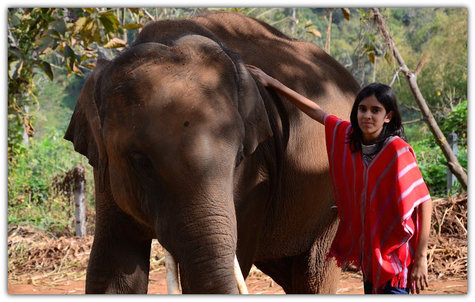 My friend named Puh My friend named Puh We were assigned our elephant, but Patara does not just randomly assign your elephant. Instead, it is based on your personality and age. I got a young, fit elephant, who was named Puh. He was a sevenyear-old male elephant, and he had tusks. Most of the other people there were in their twenties on their honeymoon, but my mom and I were the only younger and older people. That’s why my mom got the oldest elephant, and I got the youngest. This was a very cool way of assigning your elephant. My elephant, Puh, obviously loved to eat, because he ate about 11 pounds of bananas and sugar cane, and then I dragged him huge bundle of bamboo leaves, which he very quickly ate. He was a very obedient elephant, so I said “dee dee” a lot. Gao then called us back, and he told us we were going to give the elephants a health check. He said there were several steps to this, and some were a bit gross. If an elephant is healthy, it needs to be wagging his or her tail, and flapping its ears every few minutes. If this is not happening, the elephant is likely stressed or tired. Puh was neither of those things. He was restless. Item of business number two, see if the elephant got a good night’s sleep. A lot of people think that elephants sleep standing up, but that’s not true. An elephant needs to be sleeping down on the side of its body to be healthy and active. So if there is dust on the elephant’s stomach, ears, and cheeks, then you know it’s had a good night’s sleep. For the next part of the health check up we had to look at the elephant’s eyes. Elephants often look as if they are crying, but they have no tear ducts whatsoever, and their eyes only produce liquid to clean out dirt. But if you see an elephant with one eye more runny than the other, that means that it probably has an infection. But luckily none of the elephants here had any eye problems. The next thing you need to check is the elephant’s sweat. Elephants, like dogs, pant to reduce body temperature, but there is one place on an elephant's body where they do sweat. Above their toenails. We had to check for sweat above our elephant’s toenails. Puh's were very sweaty, which meant he was healthy.  Smelling the elephant poo Smelling the elephant poo And finally, we had to check the elephants’ poo. It only takes an elephant two minutes to turn this into that, and we had just fed them, so it was a good time to check the poo. First, you have to see how many pieces the elephant has pooed. If it‘s three or less, then the elephant may have a digestive problem, or maybe ate too little. Puh luckily had seven pieces. Next, you have to pick up the poo, open it up, and check what color it is. You may think it’s kind of gross to pick up dung, but elephant poo is actually very clean because of their short digestion period. What goes in comes out pretty much the same. If the poo is brown, then it is unhealthy, and the elephant probably ate something it wasn't supposed to. But if the poo is a nice lime green color, then it’s healthy. Next, you must take the elephant poo and use your fingers to check the fiber. The more fiber, the healthier the elephant. Then finally, we had to do the juice test. This one I had to do for every piece of Puh's seven pieces. I picked up the poo, wrung out all the juices, and let the greenish pulpy water run down my arm. The more water, the better.  Brushing Puh Brushing Puh After the health check, I washed my hands thoroughly. We then had to clean our elephant’s back of dust. The reason we needed to do this was because of mites. Mites will often get stuck under the folds under an elephant’s skin, so a cleaning is not just brushing the back to get the dirt off. You need to brush really hard to brush off those mites. To do this, we got a bunch of bamboo grass tied together, acting as a huge whacker. To get the elephant to lie down, you say, “Nolo.” You say “nolo.” Puh liked the back cleaning, because for him it was like a back scratch. After the cleaning for mites, I gave the brush to Puh, which he gladly ate. We headed over to a concrete circle, where we gave our elephants a shower. The transformation of elephant color is amazing. When an elephant has nothing on its body, it is grey. Some are light grey, some are dark grey. After a dust or mud bath, they turn brown. But when they get wet, they turn pitch black. Some Asian elephants, unlike African elephants, have pink spots on their forehead, trunk, and ears. I used the hose to wash Puh and get every bit of dirt off. This was pretty much useless, because as soon as he got out he threw dirt on his back and rubbed his body in the mud wallow. But it was time for lunch, so we said bye to the elephants, but we told them we’d be back in an hour. Our lunch was very nice. When we got back to the gazebo, there was a huge banana leaf covering something on the table. Whatever it was, it smelled amazing. When Gao pulled off the banana leaf, on the table lay fried chicken, grilled pork, about a jillion types of fruit, sticky rice, and Thai donuts. Even the cats who walked around thought it was good. They kept begging for some of the meat that was lying on the table. After lunch, we changed into our bathing suits and headed back to our elephants. We were now going to ride the elephants bareback on their necks, a process that does not hurt the elephant. At Patara they don’t think heavy elephant saddle, or, “howdah,” is good for the elephant, but they have nothing against riding elephants bareback. They said it’s only okay to ride on the neck, because if you ride on the back your legs dangle in the way of the leg joints, making it hard for the elephant to walk. Gao told us there were three ways to get on an elephant. For the first way, the elephant raises one foot slightly, you put one foot on the elephant’s foot, the other on the elephant’s leg, you hoist yourself atop the elephant back, and then you scoot up to the neck. This is what I did. The second way is for the elephant to lie down completely, and you get on to the back from there. The third way is the elephant brings his head down, and you step lightly on the upper trunk, and when the elephant lifts its head up, you scoot up to the neck. My mom did it this way, but she got stuck on the way up. My mom was suspended on Mae Khwan’s forehead. She eventually got on the neck, but she was facing backwards, and struggled the whole way around to face forward. When she did, everyone cheered.  Riding Puh in the jungle Riding Puh in the jungle Up on the elephant was really high. When I looked down, I felt a bit scared of falling off, but my mom was on an elephant 3 feet taller than mine. Yikes. Gao told us some commands for the elephant when riding. “Pai,” means “go forward.” “How,” was “stop.” You had to say “dee dee” a lot to let the elephant know he was doing a good job. “Janna,” was very important. It means “do not eat that,” because the elephants would constantly eat during the walk, stopping the elephants behind them from moving, and some plants aren't good for them. When we learned all these commands, we said “Pai,” and we were off into the little forest. The elephant ride was about 1 hour. I prefer this to riding in a car any day. The elephants were slow, calm, and made journey so much more interesting. On the ride one of the baby elephants that followed the elders ran around, knocking over small trees and uprooting them like it was nothing. In some places the hillside was very steep, and some trees were hard to squeeze through. The height of the elephant helped me reach up in the trees and get a nice ripe branch of leaves for Puh. At the bottom of the hill, there was a road we had to cross to get to the river. The mahouts directed the traffic, and when the elephants crossed all the cars had to stop. I waved to people in their cars from on top of Puh. When we got off our elephant, my legs were sore and stiff. We left the elephants with the mahouts for a while, while Gao showed us to the river. A different group was with their elephants, washing them and splashing them, and we watched them take a group photo. While their backs were turned, the elephants sprayed them with water. Now we knew what was to come. I dipped my foot in the water, and it was freezing cold. My mahout and Puh were already in the water like it was nothing. After getting used to the water it was not that cold. My mahout told me to get on Puh’s back and start scrubbing behind his ears. But as soon as I got on his back, he turned over and lay on his side under water, which pulled me neck deep in the water. Puh was very playful in the water, and he would spray me and pull me under water. I washed his head, eyes, tail, and even his tusks. I took some sand and rubbed it up and down his tusks, making them gleam like marble. Being in the water with the elephants was the most fun I’ve had in a long time. And sure enough, the elephants sprayed us with water at the end. It was time for us to leave, but before we left we had a four-minute elephant ride to the van pick up. I thanked my mahout very much, and gave Puh a big hug and kiss. I would miss him, but I’m going to come back next year. Gao gave us a DVD with all the pictures on it. It had been a great experience that we will have again. But our Thai elephant expedition was not over yet. We still had one more sanctuary to go to. As we drove back to Chiang Mai, I saw all of the elephants waving at me, and I saw Puh giving me a huge smile.
"When we got out for a minute to stretch our legs I suddenly froze. I saw a huge female elephant eating grass. I stared straight into her eyes, and suddenly I didn't care about a thing in the world. " I have loved elephants all my life. That’s why over this Christmas holiday I got the best present of all. I got to go to Chiang Mai, Thailand, to see elephants. My family and I spent time at three different elephant sanctuaries. In my next three blogs I will tell you about each of them so if you decide to go to Thailand you will know where you would like to go. I have also included links to their websites in case you would like to know more or make a donation. (I will continue my series of blogs about dogs in Vietnam after I finish my elephant series.)  Taking the tuk-tuk Taking the tuk-tuk After a two-and-a-half-hour plane ride from Malaysia, where we spent Christmas, we arrived in Chiang Mai. Even at the immigration counter, I could tell that the people here liked elephants. There was a big poster telling people not to buy ivory, and there were statues and paintings of elephants everywhere. We went outside the airport, and for me it was like heaven. Everywhere I looked statues or something that looked like an elephant looked right back at me. We grabbed a taxi, which in Thailand is called a “tuk-tuk.” A tuk-tuk is a sort of half motorcycle, half car, where the driver sits in the motorcycle front and two or three passengers sit at the back in a covered cabin. It was the coolest taxi ride ever. They drove us right to our hotel, which, with no surprise, had lots of elephant stuff around it.  Kabir with elephant Kabir with elephant The first sanctuary we visited was the Thai Elephant Conservation Center, a government-run project that trains and looks after elephants of all ages. My whole family stayed there for three nights. The second was the Patara Elephant Farm, where only my mom and I went. At Patara you get to be an elephant caregiver for a day, and look after and bond with the elephant you are assigned. This is a farm mostly focused on breeding their elephants and raising the population. The last sanctuary is probably the best known out of the three of these. It’s called the Elephant Nature Park. They have rescued abused and hurt elephants and given them a safe place where they can heal and relax. Here we mainly just watched the elephants, and could not be too active with them because some of them had very sad pasts. Today I will tell you about my adventures with the elephants of the Thai Elephant Conservation Center.  Kabir drawing Kabir drawing The next day after breakfast, we went out to look at some Thai temples. There were more elephant monuments than I’ve ever seen in my life. In Thai culture elephants are very important. It is believed that the Buddha's mom dreamt of a white elephant when she was pregnant with the Buddha, which was a good omen. Also, apparently elephants helped to build the cities of Thailand. They are creatures of good luck and prosperity. There was one monument that was dedicated to elephants. All around the perimeter were statues of elephants. I spent about 45 minutes sitting sketching it. 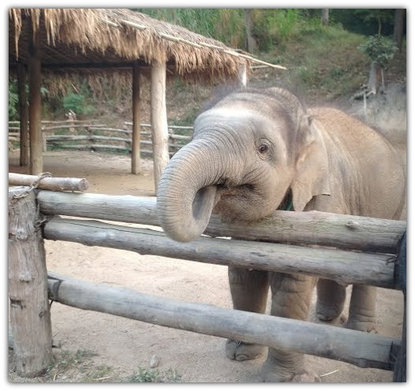 Kabir's photo Kabir's photo Then finally the day came. We got a big taxi and headed off to Lampang, to stay for three days at the Thai Elephant Conservation Center. We drove for about one hour. But once we reached the center, our taxi driver accidentally drove us to the elephant hospital instead of the center’s resort where we were staying. When we got out for a minute to stretch our legs I suddenly froze. I saw a huge female elephant eating grass. I stared straight into her eyes, and suddenly I didn't care about a thing in the world. I was just amazed. I didn’t want to leave, but we got back in the taxi. Then our taxi driver got lost again, and we ended up at the top of a steep hill. My mom my sister, and I decided to walk down the hill so the taxi could turn around more easily. But once the taxi driver got down the hill he just drove away with my dad and forgot to pick us up at the bottom of the hill. So the three of us ended up walking 1 ½ km to the resort, but I’m glad we did. On the way we passed by the elephant nursery. Four big wooden pens stood in a row, each with a mother elephant and her baby. Each of them had lots of open space and a big thatched section for shelter and shade. There was a bamboo stand in the middle of the four pens where the mahouts (elephant trainers) hung out. They were selling baskets of food for people to feed the elephants. I wanted to feed the elephants immediately, but my mom said we needed to check in at the resort first. But even on the walk on the concrete road we saw elephants in the forest roaming free down by the riverside. It was heaven. We found the resort, which was just a few simple wooden cabins on a small hill. We walked down to the nursery about half an hour later. For the next three days, I would spend most of my time at the elephant nursery, but the Elephant Conservation Center has various other attractions. One of the things they have is their mahout training course. There are 1-, 2-, 3-, 10-, and 30-day trainings. You get to be the mahout, sleep in the mahout village, and take care of your elephant. Next year I will return and do the course with my mom. The Thai Elephant Conservation Center also has a hospital just for the elephants. It is Thailand’s first and only elephant hospital, so if an elephant in another park is hurt or sickened, they get to go there. Feeding elephants is very difficult, so the park has made a plantation center where they grow all the elephant food. But even that whole garden could not feed all the elephants, so they buy fruits and veggies for the elephants. One day when I was there I saw a huge truck, all full of bananas. There must have been over a ton! And that was just for the eight elephants in the nursery! Outside the resort was a small elephant herb garden, used to make medicine for the elephants I suppose. 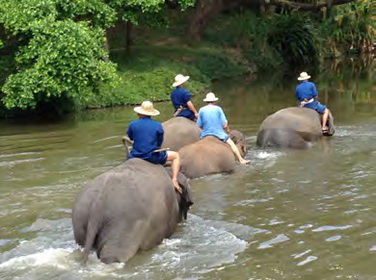 Kabir's photo Kabir's photo There is a visitor center about a kilometer from where we were, where most people go. There you can do much more touristy stuff. I preferred the gentle peace and quiet of the nursery than the noisy sounds of people. At the center the most popular attraction is the elephant show. The elephants demonstrate logging techniques, paint pictures, make music, and display agility. This is how the center makes most of its money so they can afford to keep the elephants. But we didn’t really like the idea of the show, so we did not go and see it. At the center you can also take an elephant ride on a traditional saddle called a “howdah” in English and a yaeng in Thai. We did not do this either, because we didn’t like the thought of the elephants having to carry the heavy howdah, which might hurt their back, feet, and tail One thing I found very fun at the visitor center was watching the elephants bathe with their mahouts. The elephants would spray themselves with water, and go under water, only sticking their trucks above. One of the elephants looked like he was especially having a good time, swinging his head up and down in the water and splashing it all over himself. The mahouts were quite agile. They could stand on the elephants’ submerged bodies without getting wet above their ankles. And when it was time to get out, some of the elephants who did not enjoy bath time ran out and shook their bodies, while the others tried to stay in, and would even spray their backs with water after they got out. After the all the elephants left and visitors were gone, a man on a little raft came with a net and scooped up all the elephant poo from the water. As I said earlier, I spent most of my time at the elephant nursery, where all the moms and babies lived in their wooden pens. I would wake up every morning, go down to the nursery and be with the elephants, feed them, draw them, and talk to them. I got to know the mahouts and met the dogs that hung around the pens. Balloon was a very cute, chubby lab-beagle mix who belonged to one of the mahouts. He did not mind the elephants at all. He would walk into the pens and play with the babies. The first pen had a mom and her baby, Wassana and Malini. Compared to the other elephants Wassana was a small mother. She was only about 7 feet tall, and she was very dusty. Her baby named Malini was a sweet elephant. She was 1 year and 11 months, the same age as most of the other babies, but she really bonded with us, especially with my mom and me. Malini would reach her trunk out through her pen and kiss my mom’s hand. 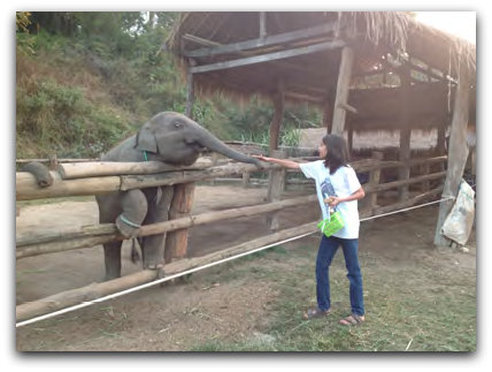 Kabir Kabir The second pen contained another mom and a two-year-old baby, Poompuang and Khai Wan. Poompuang had a very interesting past. She has had two daughters, two sons, one stepdaughter, and right now is looking after her stepson, Khai Wan. Khai Wan was by far the most greedy of all the elephants when it came to food. Of course, when I walked by the elephants with any kind of food they all looked over at me, but Khai Wan would stop his mom from getting any food just to feed himself. He would try to climb up over the pen so could grab the food first. None of the elephants ever got full, especially one time when we gave them sunflower seeds. That was these elephants’ favorite food. The third pen also contained another mom and baby, Poun and Poun San. Poun was often swaying back and forth, an elephant’s sign of distress, because she had an eye infection. Apparently she had thrown a lot of dirt in her eye, which was causing it be very runny, and she appeared to be crying. I stayed next to her every day and talked to her to help her feel better. I petted her right on the forehead, even though she got lots of elephant snot on my leg. She was a sweet old elephant. Her daughter, Poun San, loved food too, but she was very feisty. One time I was feeding her food, but there was nothing left in the basket. To make sure, she pulled the basket away from me. And she was really strong! She was only two years old and she was already stronger than my dad. She grabbed the basket away from me and when she realized there was no food inside, she crushed the basket with her foot. Her mahout had to run into the pen and take the basket away from her. The next elephant did the same thing, but she was fully grown and did not succeed in pulling it away from me. Her name was Boon Mi. She was a huge mother elephant, but like Poompuang she was an adoptive mother. She was looking after a two-and-a half-month-old baby elephant named Sri Kham. Sri Kham was born in the wild the middle of October, and her mom died about two months later from snakebite. We saw her about ten days after her mom died. Sri Kham was not  allowed to be fed by visitors because she was so young and was very sensitive after losing her mother. Elephant babies stay with their mothers for at least three years, and if an infant loses its mother, it’s not likely it will live for a week. If it does, it is very lucky. Boon Mi was very loving and protective, and the mahouts were constantly playing with Sri Kham and trying to cheer her up. I could tell she loved the mahouts. All of the elephants did. The mahouts were family to them, and they did everything together. The mahouts hugged, kissed, and loved the elephants like their own children. After a few days we could see that Sri Kham was very happy. This was good because I could draw pictures all of the elephants being happy. See the slideshow below. Each of these eight elephants loved food, but some of them were very picky. For starters, the two-month-old only drank milk. The formula was made by the mahouts, since her adoptive mother couldn’t produce enough milk. Most of the elephants loved sugar cane, because it’s like a candy for them. When they bite down on the cane, it makes a huge crunching sound. But because the younger elephants have small or no teeth, it’s hard for them to chew, although greedy Khai Wan loved it. He put the sugar cane under his feet to break off the husk, then sucked the sweet gooey inside. Khai Wan’s mom hated corn, because whenever I handed it to her she threw it on the ground. Khai Wan would then reach his trunk out to grab the discarded corn. He is the greediest elephant I’ve ever met. One time in an attempt to get some food, he stuck his head out though the fence. We thought he was stuck, but his mahout said he did it all the time. When he finally got his head out, it was about ten minutes before he did it again. We even spent New Year’s Eve with the elephants. We came down at 11:50 p.m. from our cabin and watched the elephants sleeping. Elephants sleep for four hours, from 11 pm to 3 am. While we were walking by, three of the dogs started barking and then came running to greet us. We ended up waking up Poompuang. As the clock turned to 12:01, we whispered “happy new year,” waved bye to Poompuang, and went back to our cabin.  On the last day we were there, I gave them one of these elephants their favorite food, sunflower seeds. I asked the mahouts how much these elephants eat, and they said 590 pounds of vegetation a day. They drink 50 gallons a day, and the mahouts give the water in a really cool way. The elephant holds its trunk out and the mahout turns on the hose. Then they pour the water down the elephant’s nostrils, and wait for the elephant to bring its trunk to their mouth and spray. It’s so cool! The mahouts let me do it myself, and when the elephant sprayed the water in its mouth the water sprayed everywhere, including on me. It was finally the day for us to leave the elephants. We only left at 2 o’clock on January 1st, so I had some time to be with the elephants. I bought all the elephants some food, and I especially spent a lot of time with Malini and Wassana. Usually visitors aren’t allowed to go under the rope surrounding the elephant pens, but that day the mahouts let me go in so I could play with the elephants. I got to give Malini and Wassana big hugs, quench their thirst, and spray them with water. Wassana loved being scratched being her big, big ears. She leaned over to the fence to give me a type of nuzzle. I had to pull my hand away or not it would have been squashed between an elephant and the fence. I spent lots of time brushing dirt, rocks, and hay off of Malini’s back. She loved to put all these things on her back, but she loved it even more when it came off. It was sad when I had to say goodbye, but I was happy that there is such a place where the elephants were so happy. And I also knew would get to go to two more elephant sanctuaries. I will tell you about my other two adventures next time. But for now, ciao!
“When a man has pity on all living creatures then only is he noble.” – Buddha  My dad with a dog at the beach My dad with a dog at the beach I come from Seattle, which is a really dog friendly place. There are dog parks, bakeries for dogs, doggy daycares, and even restaurants where you can bring your dog with you. But when I moved to Vietnam, I noticed things were different. When we moved into our new house in Ho Chi Minh City, we noticed that our neighbors had a white spotted dog. It did not have a name. The dog was chained to a small metal cage in their front lawn. No one ever walked or played with the dog, and on the occasion when it was unchained, my sister and I would play with it through the iron gate. My sister named him Teo. Teo was chained up and barking almost everyday, all day. They left him out in the scorching hot sun, they left him in the cold rain, and even in thunder and lightning storms. We really wanted to do something about it. Every time my dad tried to talk to our neighbors, they just complained about how bad their dog was. My dad just moved to a new country and he did not want to be telling the neighbors what or what not to do. They don’t have Teo anymore. We don’t know what happened to him.  Neighborhood dog Neighborhood dog I soon found out that it was not just my next door neighbors who mistreated their dogs. Lots of people in my neighborhood were the same. One day when I was walking home from school, I saw some ladies on the curb throwing stones at a small dog, and beating him with a stick. Lots of dogs in my neighborhood are on short little chains, or inside the gate, sticking their heads out the gate, pleading to go outside. Near my house, there is a cafe called Stardogs. It’s not the kind of cafe like in Seattle where you can bring your pooch and get a dog treat. Here in Stardogs, live a family of Siberian huskies. The cafe has them there because the dogs attract customers to their store. People must pay 40,000 Vietnamese dong (that’s about 2 dollars) to play with the dogs. But these dogs are in no shape to play. They are confined to a small muggy area, and are constantly in need of fanning. Huskies need cold, and in Ho Chi Minh City, cold means 80 degrees. So the huskies lie around all day, panting. There is another house near where we live where there is a husky who is tied up on a short leash on the porch all day long. We have never ever seen him go for a walk or play with anyone. He does not have a water bowl near him. Twenty-five years ago, Vietnam was very, very poor. A lot of people could hardly feed their families, let alone have a dog. Back then people couldn’t usually afford to have a dog, but as Vietnam becomes richer, people have been getting dogs as pets. But people have been treating dogs in sad ways. Having animals for companions is still a little bit fuzzy here in Vietnam. A lot of people do not know much about caring for a dog, or only have one for a status symbol, to show that they are rich. Pure breed dogs are really popular, especially blue-eyed huskies as well as malamutes, samoyeds, golden retrievers, and German shepherds. These are all dogs that like cold weather. The biggest problem, says Dr. Nguyễn Văn Nghĩa, a vet who lives in Ho Chi Minh City and is passionate about animals, is that most people in Vietnam are not educated enough about how to treat dogs. A huge problem is that people do not understand a dog's basic needs, like water, food, and doctors. Lots of people here think that taking a dog to the vet is a waste of money. In fact, even most vets are not very well trained either. In Vietnam you can become a vet in 6 months, while in America, it takes 5-8 years of training. Because more people want dogs as pets, there are more places selling dogs. The pet market in Ho Chi Minh City is a sad sight. It is located in district 10, about 10 miles away from where I live. Here on the streets are rows and rows of cages, and crammed inside are dogs. To sell dogs like this is illegal, but the people just ignore the law. Some of these dogs are stolen from other pet owners. They are kept in small cages, out in the blazing sun all day. This is even worse when the cages have lots of dogs crammed inside. The sellers do not give the dogs enough water, and because of that the dogs often die. And about 90% of all dogs in Ho Chi Minh City that are sold for pets on the illegal market eventually die of distemper in their new home. The sellers give the sick dogs steroids to make them appear more lively and active, which makes buyers want the “active” dogs. Dr. Nghĩa disapproves of this trade. He wants to make the people who are selling the dogs vaccinate them. But he has often been shooed away and cursed at, because the sellers don’t want to spend the money, because they think they’re just dogs.  But not all dogs in Vietnam are treated badly . Lots of the Buddhist temples have happy dogs. When we were in Mui Ne we met a cool dog on the beach. He hangs out all day making new friends, and his owners are really nice to him. Things are changing. Vietnam is learning more about the welfare of animals, and they even had a conference for the welfare of animals (that will be in one of my future articles). More and more educated vets are coming to Vietnam, and people are changing quite a bit. But there's still a lot more to be done. Next time, I will be talking about a very sad fate. The dog meat trade in Vietnam. But for now, goodbye, and please, take care of your dog.  by Kabir Kukathas by Kabir Kukathas I really love animals, especially elephants. I have loved them since I was less than a year old. I enjoy reading about animals, going to places where I can see them, drawing and painting pictures of them, and watching documentaries about them. I visited a sloth sanctuary when we traveled to Costa Rica two years ago.  When we were in Costa Rica, we also saw basilisk lizards, Jesus Christ lizards, jaguarundis, capuchin monkeys, howler monkeys, capybaras, coatis, and Costa Rican boars. We got up really early one morning and went for a long hike in the mountains to see toucans. Here is a picture of me with a lizard (I’m not sure what kind) that was just hanging out at the hotel pool. 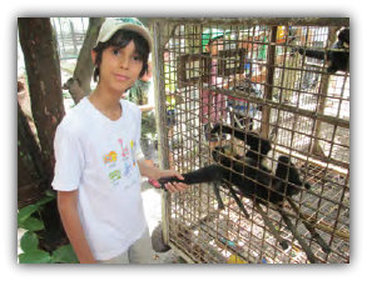 Kabir with gibbon Kabir with gibbon Last year I was in the Roots and Shoots Club at my school here in Vietnam. We did lots of activities and raised money for Endangered Asian Species Trust (EAST). I did a slide show on elephants and helped to organize a movie night. My dad and I visited the rescue and rehabilitation center for Wildlife At Risk (W.A.R.) that is a few hours’ drive away from Ho Chi Minh City. That’s me holding hands with a gibbon. Unfortunately, most of the animals there are in cages. But W.A.R. and E.A.S.T. are some of the few organizations in Vietnam trying to protect animals. They have a lot of different animal sanctuaries. They have a moon bear sanctuary at Cat Tien National Park. I went there with my class in March. I kept a journal about my visit to Cat Tien. It has drawings of some of the animals. I am so happy because this Christmas I am going to Chiang Mai, Thailand, to see elephants. I will visit three different sanctuaries and I also get to go to Patara Elephant Farm, which is a place where you can hang out with rescued elephants all day long. You feed them and play in the water with them. Although I really miss Seattle and all my friends there, the best part of moving to Vietnam is that I can go to places where I can see animals. I even get to see cool things like blue headed lizards and frogs in our yard. Last week we had three different types of frogs and a toad in our house. When I grow up I am going to be an artist and an animal conservationist. My dream is to go to Kenya and see wild African elephants. My mom and I are saving up to go there. Right now I’m also writing a graphic novel called Zoa. It’s about a young elephant named Eton who has to go on a quest to save the land of Zoa (which is Latin for animals) from being covered in darkness by his grandfather, who is being used by humans. I also like doing stop motion videos. I have a YouTube channel called LegoElephantStudios.
|
KABIR'S BLOGMy name is Kabir Kukathas, and I am 12 years old. I live in Ho Chi Minh city, Vietnam. I am originally from Seattle, but in 2013, I moved here. I love to draw, sketch, make cartoons and comics, make stop motion, and I especially like to draw elephants. I love all animals, but elephants are my true passion. I am writing a book about a elephant, and am giving the proceeds to elephants too. Around my house live lots of small animals, as well as my cat, and I like to observe them when they appear.
Archives
February 2016
Categories
All
|



















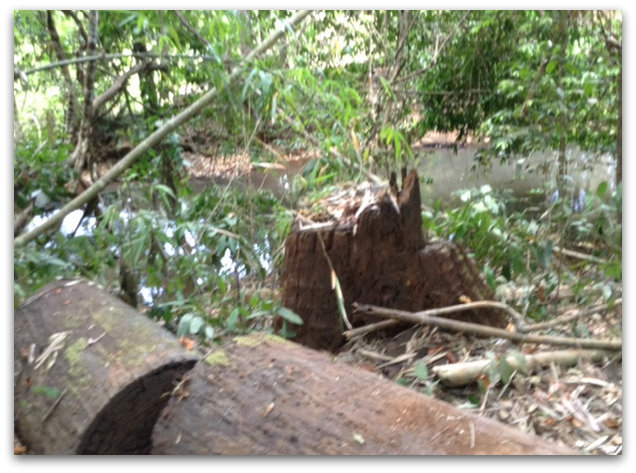




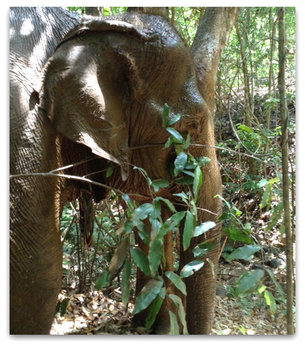

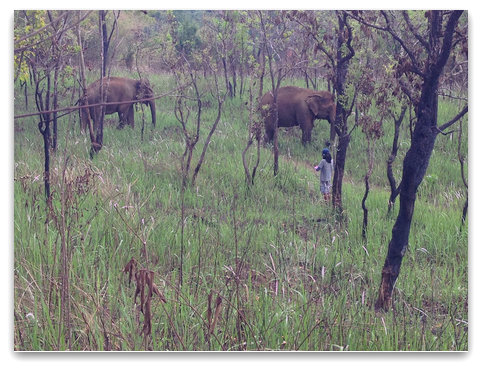



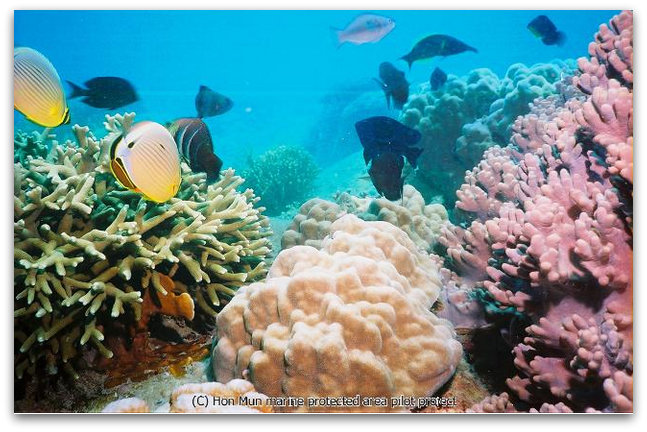





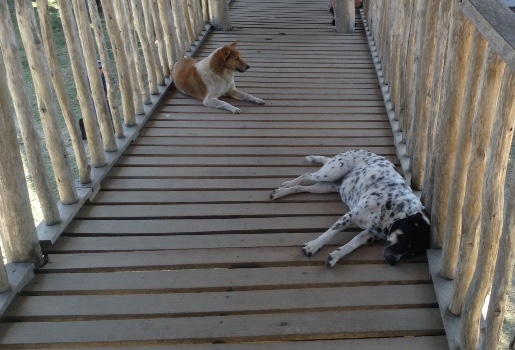





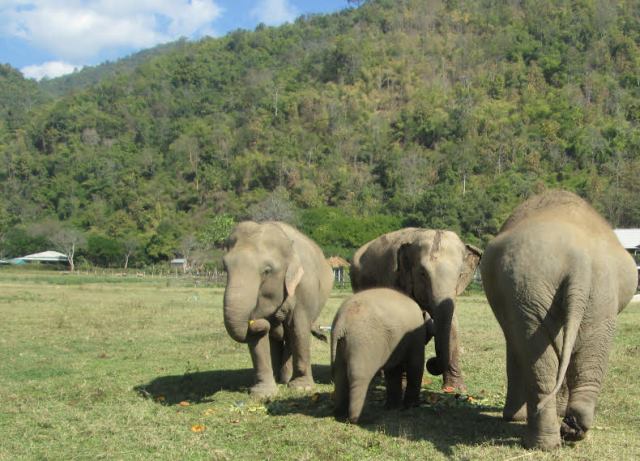









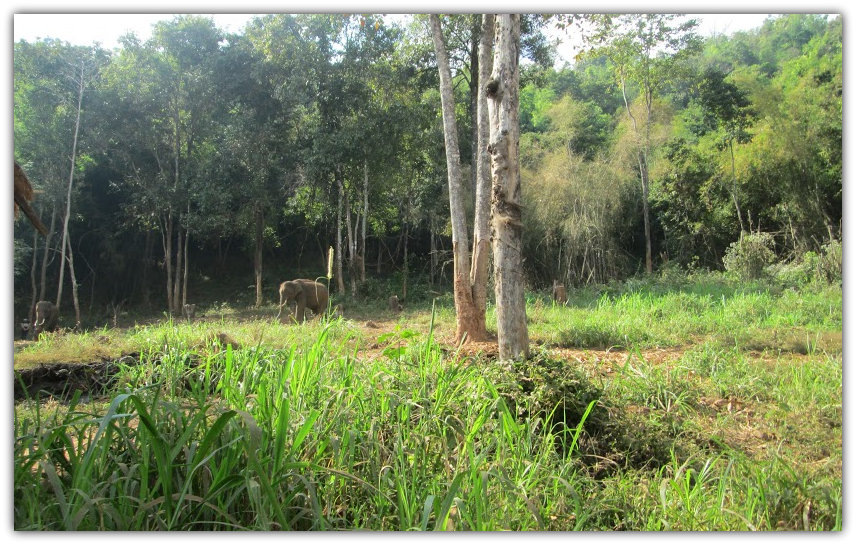

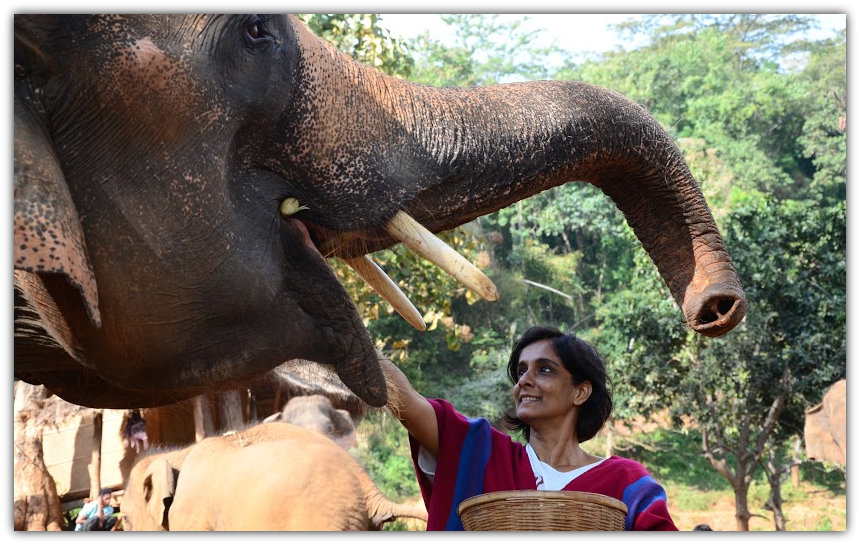






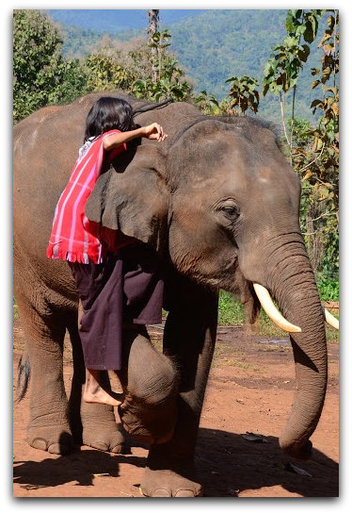

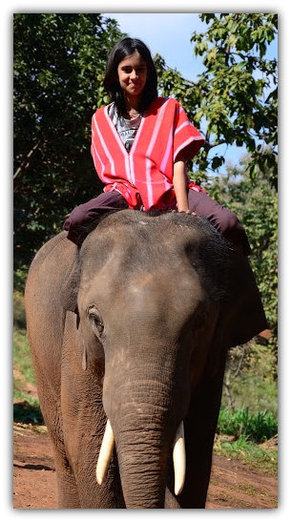





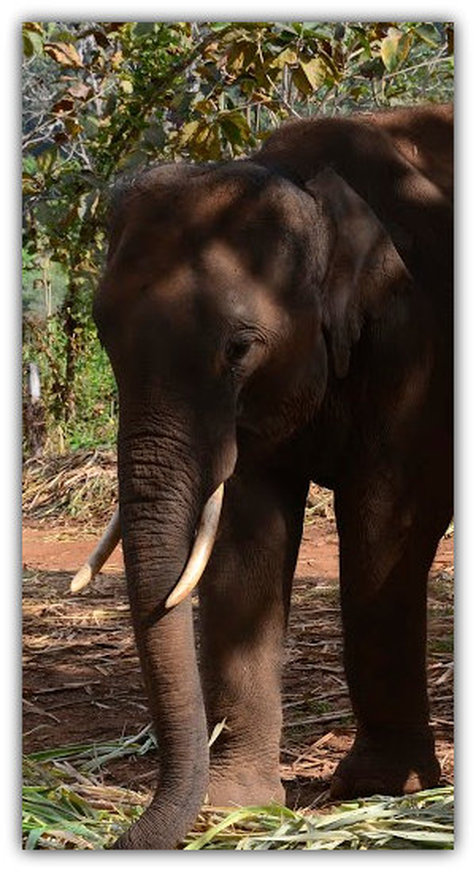





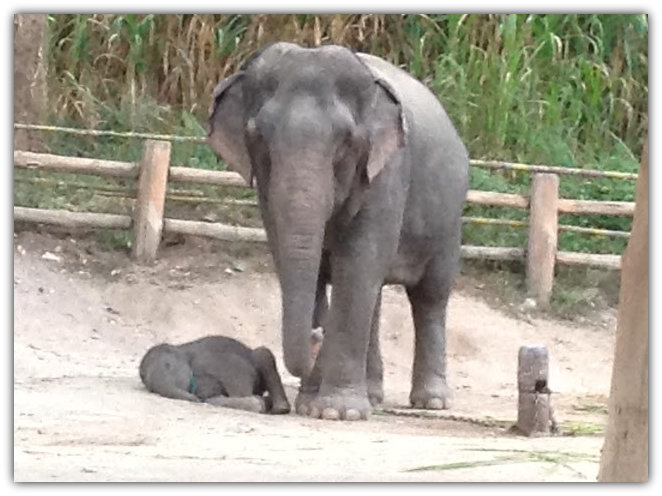


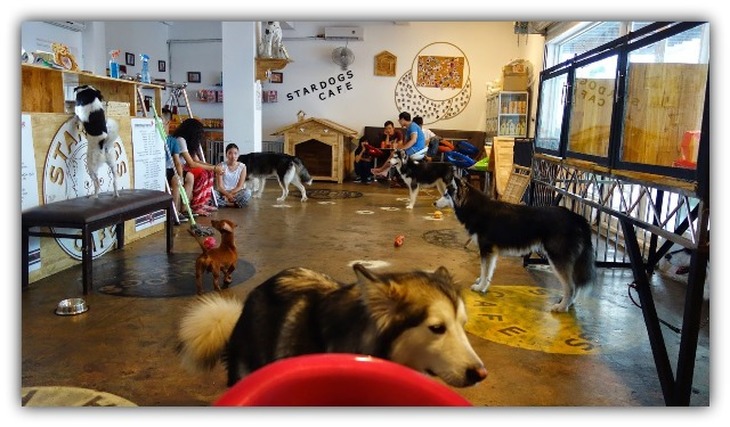



 RSS Feed
RSS Feed


